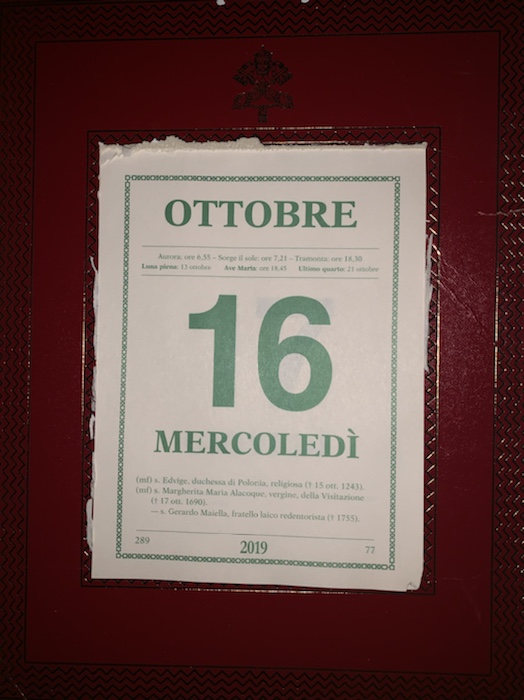
You will want to know that the Sunrise in Rome was at 7:21 and that Colors should sound at 18:30, 15 minutes before the poor little Ave Maria bell sounds.
It has been a really busy couple of days, so I haven’t a lengthy photopost summary. However, I do have a few things of interest.
Firstly, any one who is interested in a rich experience of Rome ought to read some art and architecture history. To get you into an extremely important period for the development of the City, and must of what we most enjoy now, I might recommend a couple starting points.
First, Caravaggio: A Life by Helen Langdon.

This gets you into the Borromean spirituality at the foundation of the painter’s vision, and into the alleys and corners of Rome in his day, as well as into the salons of the cardinals and patrons.
Then, The Genius in the Design: Bernini, Borromini, and the Rivalry That Transformed Rome by Jake Morrisey.

It’s a terrific account of the careers of these two pivotal figures, once partners, then rivals, a huge success with ups and downs and a genius who committed suicide.
Speaking of Borromini, he is buried in this great barn of a church, San Giovanni dei Fiorentini, the locus of the Florentines in Rome.
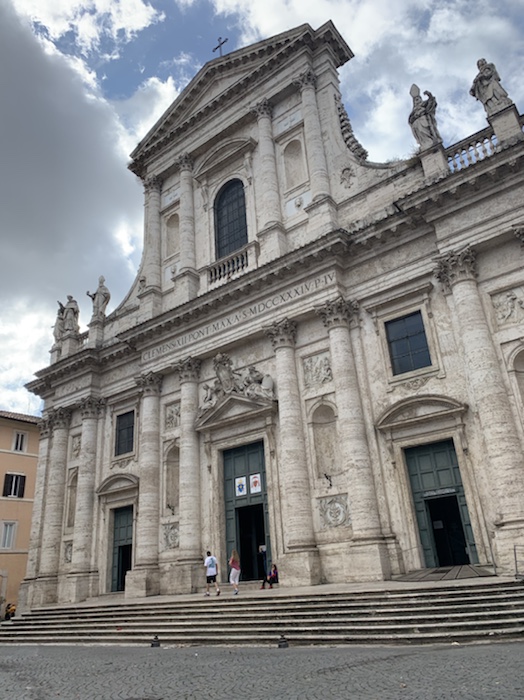
It was built in an odd place, back in the day, and it is still an odd place. The book by Morrisey talks a little about the church, which Borromini worked on and where he lurked, alone and sullen in his dark outfits. Allow me to quote him:
The place where Borromini was buried, the church of San Giovanni dei Fiorentini, is a traditional Roman neighborhood church. It is stately but not imposing, grave but not commanding, neither large nor magnificent in a city bursting with churches that are both. Commissioned in the sixteenth century by Pope Leo X, a member of the Medici family, for the Florentines, who for generations lived in this neighborhood near the Tiber, San Giovanni stands near the north end of the Via Giulia, just where the river makes its lugubrious turn south. Begun in 1509 from a design by Jacopo Sansovino (before he left Rome for Venice) and built of traditional flat Roman brick (now gray with age and grime), San Giovanni is dedicated to Saint John the Baptist, the patron saint of Florence. It sits in a part of Rome that by the nineteenth century had, in Émile Zola’s words, “fallen into the silence, into the emptiness of abandonment, invaded by a kind of softness and clerical discretion.”
Visiting the church, it’s clear why it has been called “so large a church along so terrifying a river.” It is wedged into a narrow sliver of land whose constricted dimensions must have demanded a good deal of resourcefulness from the builders: When it was built, its altar end jutted out over the Tiber’s riverbed; the stone piers supporting it had to be sunk deep into the muddy shoreline. The result is a church that even now clings tenaciously to its place, like an old, nearly forgotten watchdog that knows he is no longer needed but nonetheless refuses to cede his place at the door.
San Giovanni’s two noteworthy architectural details are its elongated, crownlike dome, designed much later by the preeminent architect in Rome at the time, Carlo Maderno, and early on nicknamed the confetto succhiato—half-sucked sweet—by residents of the neighborhood, and its curious lantern, a tall, cylindrical shaft of slender windows that alternate with equally narrow stone buttresses coiled at their base like tightly wound ribbon. This unusual concoction was designed by a Lombard stonemason who worked as Maderno’s assistant, a young man named Castelli, who soon began calling himself Francesco Borromini.
Borromini knew this church well. It was one of the earliest buildings he worked on with Maderno, and the church’s grandiose Falconieri chapel—its convex high altar, a fantasy in marmi mischi (precious materials of brick red travertine and gilding) that presses out into the congregation—celebrates John the Baptist. It was one of Borromini’s last great commissions before he died.
For most of his life, Borromini lived in a house next to San Giovanni’s high, unwelcoming walls; he was familiar with the fashionable Via Giulia, the boulevard created by Pope Julius II early in the sixteenth century, and the shadowy tangle of streets of small houses stuccoed in the traditional Mediterranean colors of ocher, umber, and dun that twist out from it like cracks in glass. He knew the sounds of shouting river workers and bickering shopkeepers, the lingering odors of fetid water and rotting garbage, just as he knew the traditions and rituals of San Giovanni, which included the annual Easter blessing of the lambs. His lonely figure—always dressed in black, like the chief mourner at a funeral—was well known to the hatters, trunk makers, locksmiths, tailors, grocers, and booksellers who had shops throughout the area.
It was in this sestiere, in the house where he lived, soberly and alone, that Borromini died early on the morning of August 3, 1667.
Morrissey, Jake. The Genius in the Design (pp. 3-4). HarperCollins. Kindle Edition.
Now you have a feel for it.
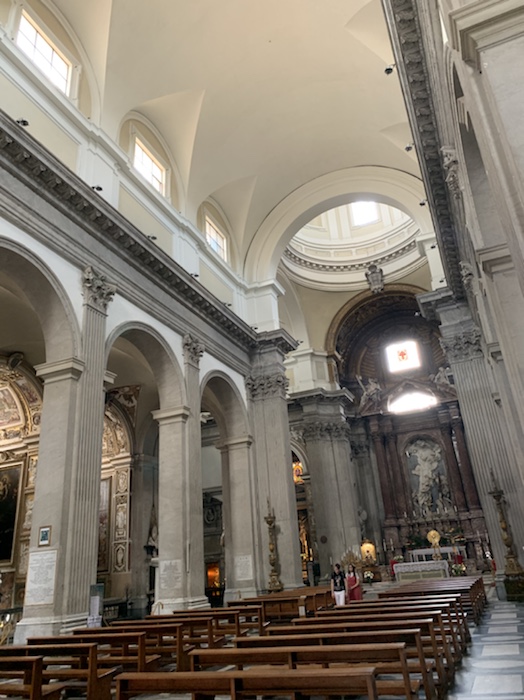
Pippo Bbono!
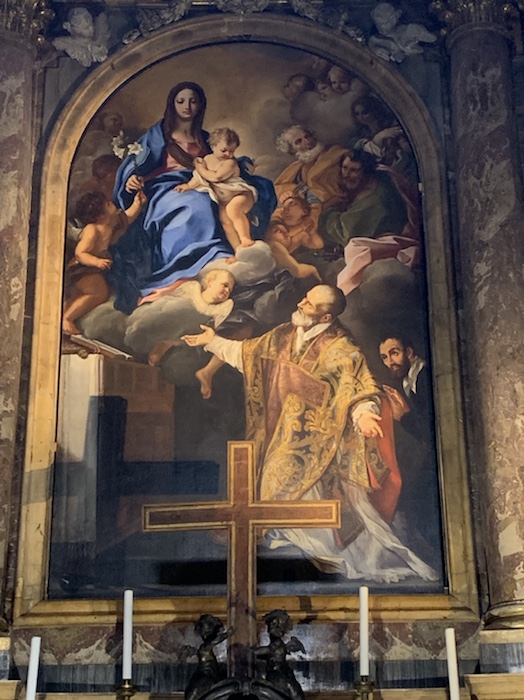
More beautiful details.
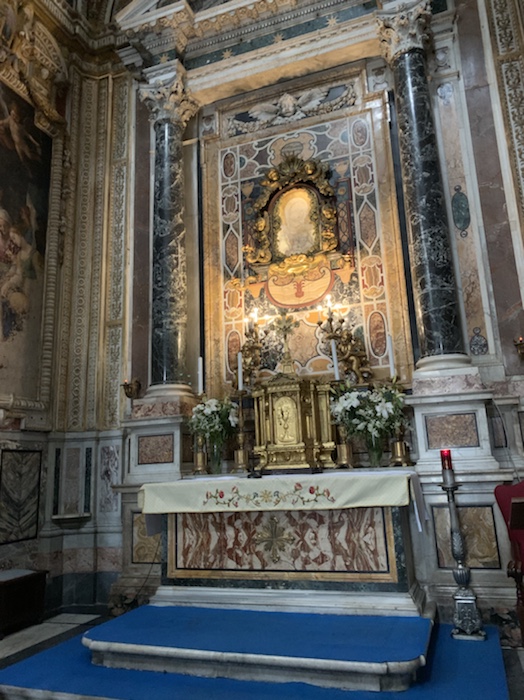
That tabernacle. What were they thinking? And of course idiocy for the altar.
But notice in the floor….
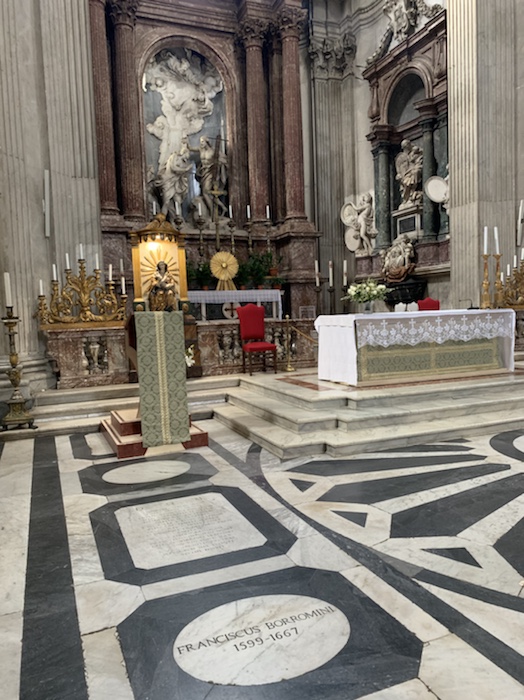
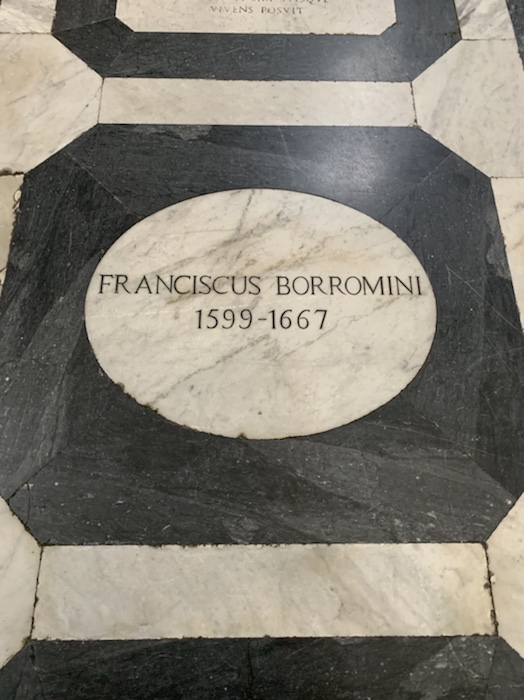
What an amazing talent. The account of his depression is in the book.
I was near the Vatican this morning and NOT for the audience… quod Deus avertat… but rather for a gathering of colleagues to catch up on stuff. While over there I wanted to find a zip-cover for my Baronius breviary. Remembering that, last May, Leoniana was closed, I walked to it to see if there were changes. It was open, but not open. I walked in and it was as if abandoned in mid sale, some shelves cleaned out.
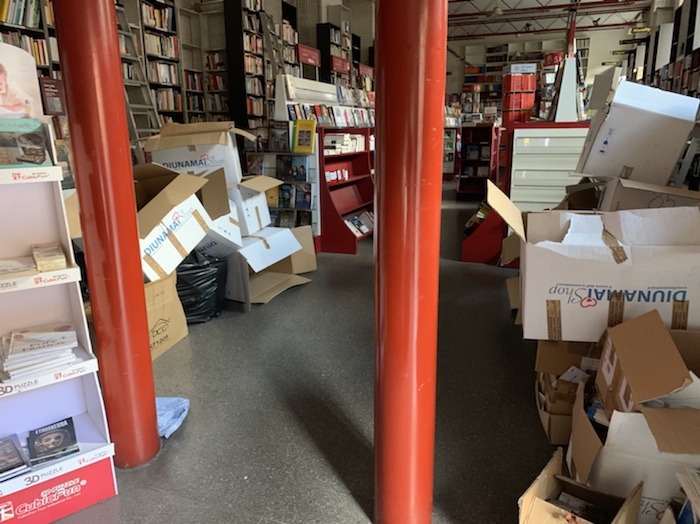
How sad. I bought most of my books there for years, and Angelo was a good friend since the mid 80’s.
In the Via della Conciliazione I ran into two gals who are distributing for free special copies of the superb book about the Traditional Latin Mass, Treasure and Tradition (link always on the sidebar here). St. Augustine Academy Press made translations into Spanish and Portuguese and a special flexible cover for the Canonization of Newman. They had 7000 printed here and they’ve been giving them out: 3500 on canonization day alone.
They want to get them into the hands of SEMINARIANS in Rome. They can provide BOXES of them! I can get you in touch with them. They have some 3500 to go!
If you haven’t seen this book (the regular edition has a different cover), you are missing something wonderful. It’s super instructive and beautifully done.
Two great examples of faith, out there doing something concrete.
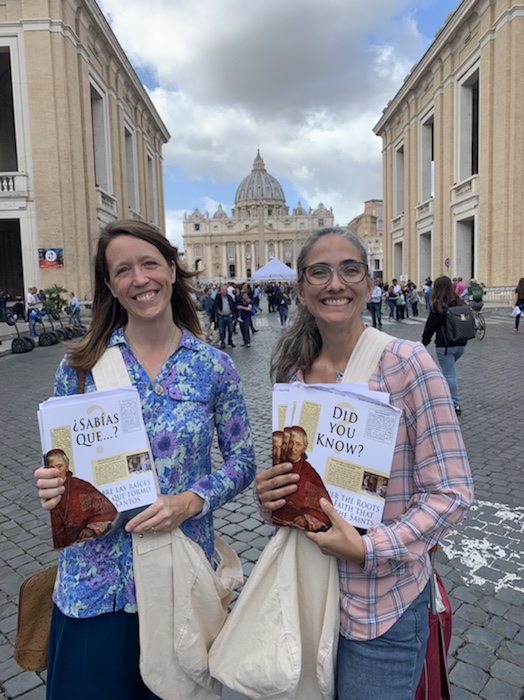
They got hassled by the police, “You aren’t those Church Militant people, are you?” Anyway, they were shut down and forced to go to a permit office… which is like being sent to the depths of a bureaucratic hell that not even Dickens could fathom. It seems that permissions are needed for flyers. “But these aren’t flyers!”, they responded, “They’re books!
So, they are back in business with no problems.
A little detail from a wall. Many buildings back in the day were owned by confraternities or religious. Hence, their ownership was indicated in the walls. This one was in the hands of the group that St. Frances of Rome founded and joined, the Benedictines of Tor de’ Specchi. You can see Frances’ Guardian Angel. I’ve had great affection for this saint, since when I first moved to Rome (having been rejected in my native place), I live in her old house, her family’s palazzo in Trastevere, when she also died. She took me under her wing, as it were.
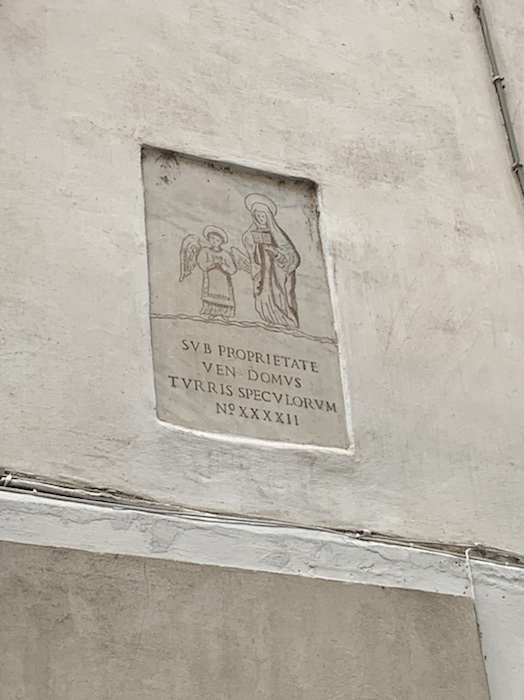
And now the food portion of the post.
This life hack has to do with food, in that I was irritated at dealing with a dull knife.. and the only real knife in this place. Need to sharpen a knife and don’t have a sharpener? I’ll bet you do have a sharpener. Find a ceramic coffee mug that has an unglazed ring on the bottom or maybe a plate, flower pot, etc.
Hold the knife at about 20° and draw it firmly and smoothly and quickly across the roughish unglazed ring. Repeat going the other way.
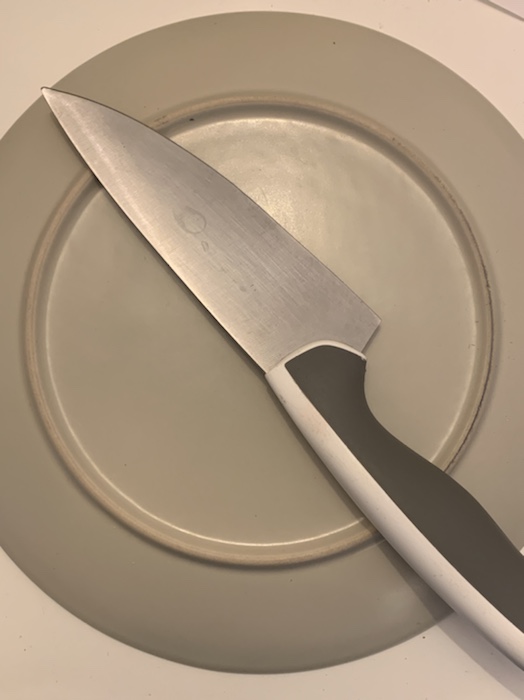
Think about it. Lot’s of sharpeners are ceramic.
Now, instead of crushing a tomato or other thing, it neatly slices, as it did when I did a casual chiffonade of basil growing in my kitchen windows box (after I cleaned out the detritus left from some other decade).
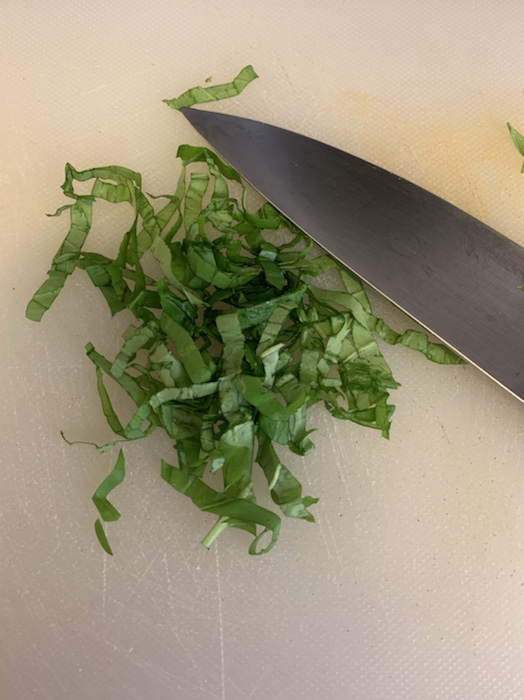
Last night I was out with delightful people. We ate at a good Sicilian place.
Caponata and focaccia.
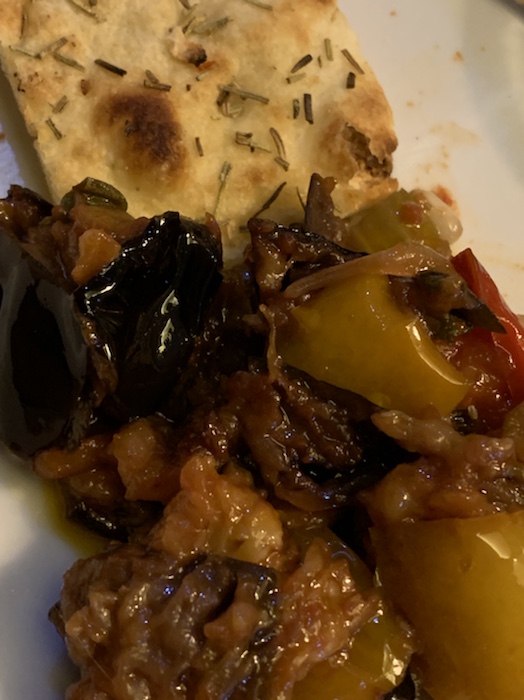
Spaghetti with tomato, tuna, hot pepper. I would have made it a little hotter and I ate about half the pasta. Gotta cut back.
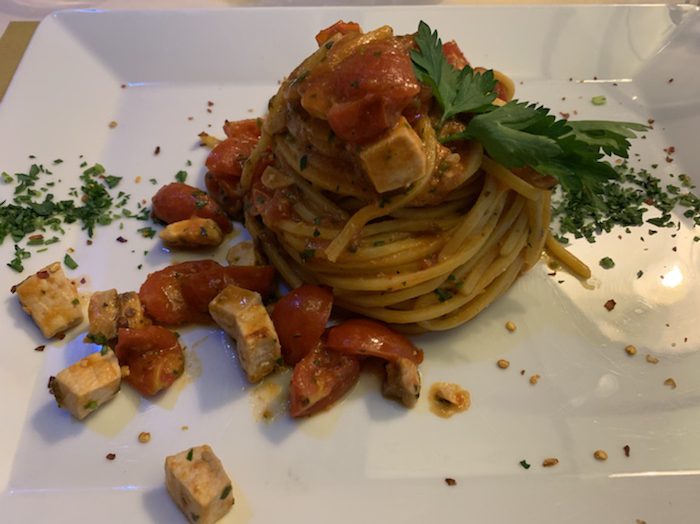
COLD REPORT: I’ve beaten the head part. I still have a little cough. Not bad.
Whew.
Many errands today, and writing.
I will say MASS FOR BENEFACTORS tonight at about 6PM Rome time.


































Thank you, Father. Praying for you daily. And WOW about that knife trick!!
Love the knife hack.
The photo you posted of yourself at the beginning of your visit indicated there is less of you to love.
That’s great. Please do take good care of yourself. If you don’t already take walks, I highly recommend. Walks have so many benefits, plus it’s quiet. You can ask Jesus to walk with you, and share what you experience.
San Giovanni dei Fiorentini was my usual spot for Sunday Mass in English while visiting Rome in the pre-Sumorum days. It was undergoing repairs at the time, which meant the priest had to use one of the side altars, but it was a nice place to avoid the tourist crowds.
I beg your pardon. Francesco Borromini and Carlo Maderno were Swiss and not Italian. As well as Domenico Fontana (Scala Santa, Saint Peter dome, the removal and erection of the Obelisk in Saint Peter square.)